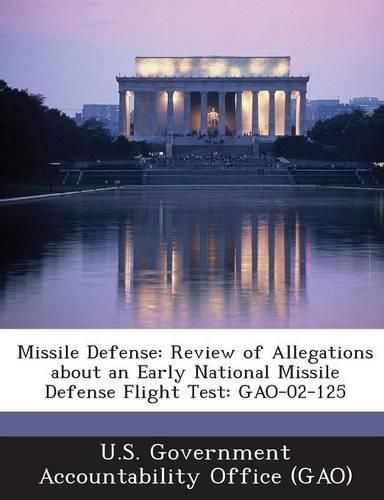Readings Newsletter
Become a Readings Member to make your shopping experience even easier.
Sign in or sign up for free!
You’re not far away from qualifying for FREE standard shipping within Australia
You’ve qualified for FREE standard shipping within Australia
The cart is loading…






The Department of Defense (DOD) awarded contracts to three companies in 1990 to develop and test exoatmospheric kill vehicles. One of the contractors–Boeing North American–subcontracted with TRW to develop software for the kill vehicle. In 1998, Boeing became the Lead System Integrator for the National Missile Defense Program and chose Raytheon as the primary kill vehicle developer. Boeing and TRW reported that the June 1997 flight test achieved its primary objectives but detected some sensor abnormalities. The project office relied on Boeing to oversee the performance of TRW. Boeing and TRW reported that deployed target objects displayed distinguishable features when being observed by an infrared sensor. After considerable debate, the program manager reduced the number of decoys planned for intercept flight tests in response to a recommendation by an independent panel. The Phase One Engineering Team, which was responsible for completing an assessment of TRW’s software performance within two months using available data, found that although the software had weaknesses, it was well designed and worked properly, with only some changes needed to increase the robustness of the discrimination function. On the basis of that analysis, team members predicted that the software would perform successfully in a future intercept test if target objects deployed as expected.
$9.00 standard shipping within Australia
FREE standard shipping within Australia for orders over $100.00
Express & International shipping calculated at checkout
The Department of Defense (DOD) awarded contracts to three companies in 1990 to develop and test exoatmospheric kill vehicles. One of the contractors–Boeing North American–subcontracted with TRW to develop software for the kill vehicle. In 1998, Boeing became the Lead System Integrator for the National Missile Defense Program and chose Raytheon as the primary kill vehicle developer. Boeing and TRW reported that the June 1997 flight test achieved its primary objectives but detected some sensor abnormalities. The project office relied on Boeing to oversee the performance of TRW. Boeing and TRW reported that deployed target objects displayed distinguishable features when being observed by an infrared sensor. After considerable debate, the program manager reduced the number of decoys planned for intercept flight tests in response to a recommendation by an independent panel. The Phase One Engineering Team, which was responsible for completing an assessment of TRW’s software performance within two months using available data, found that although the software had weaknesses, it was well designed and worked properly, with only some changes needed to increase the robustness of the discrimination function. On the basis of that analysis, team members predicted that the software would perform successfully in a future intercept test if target objects deployed as expected.